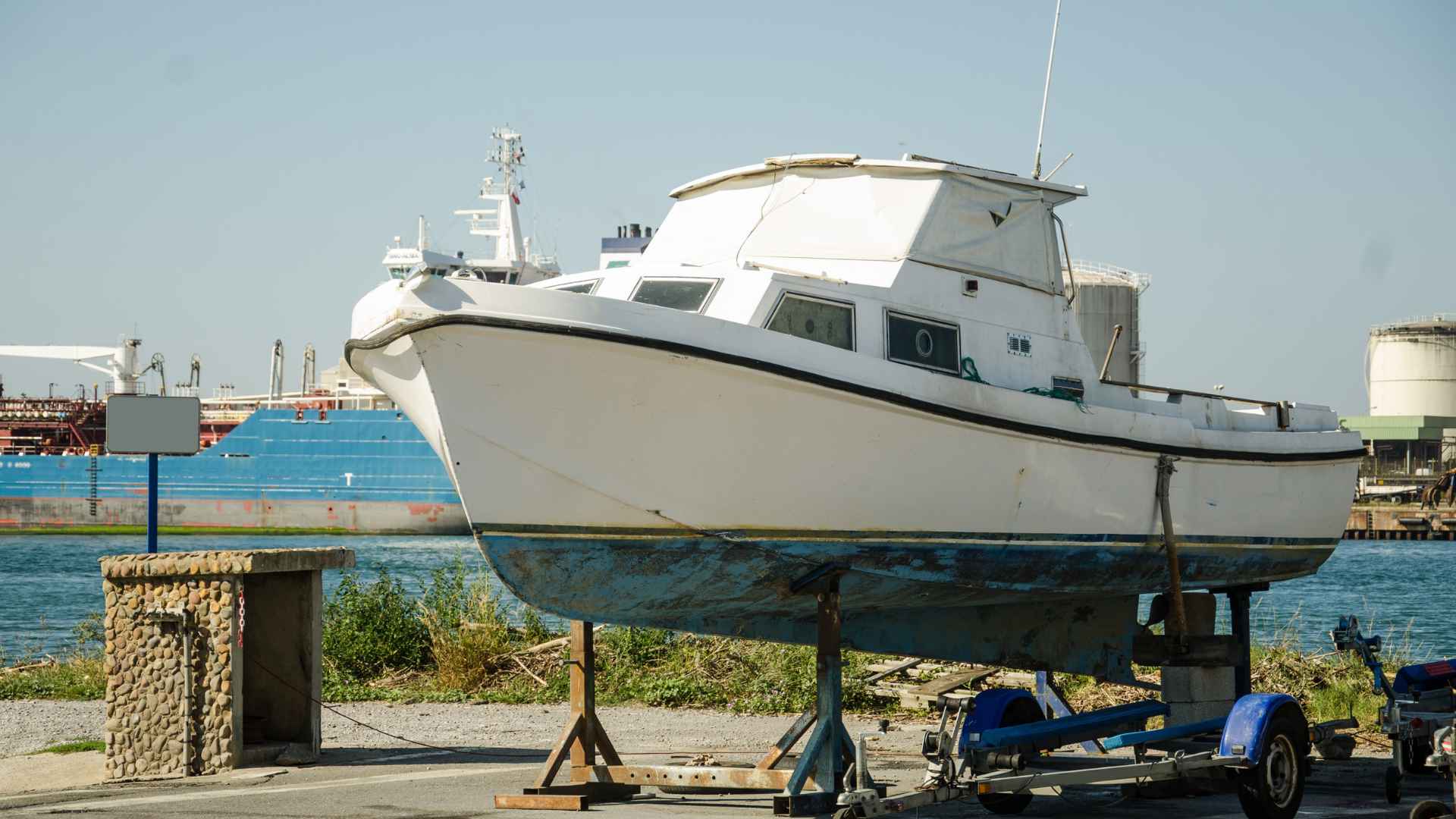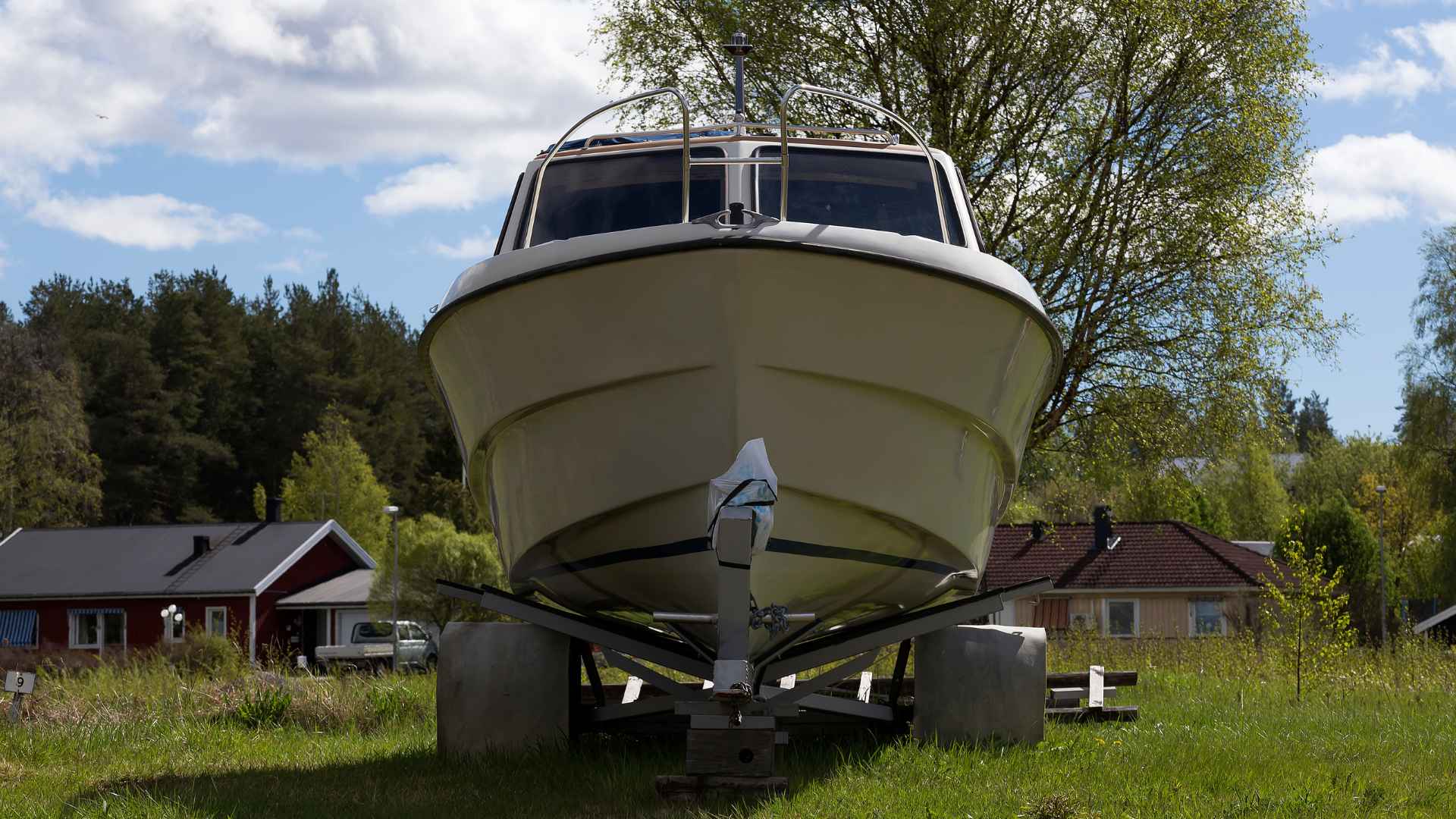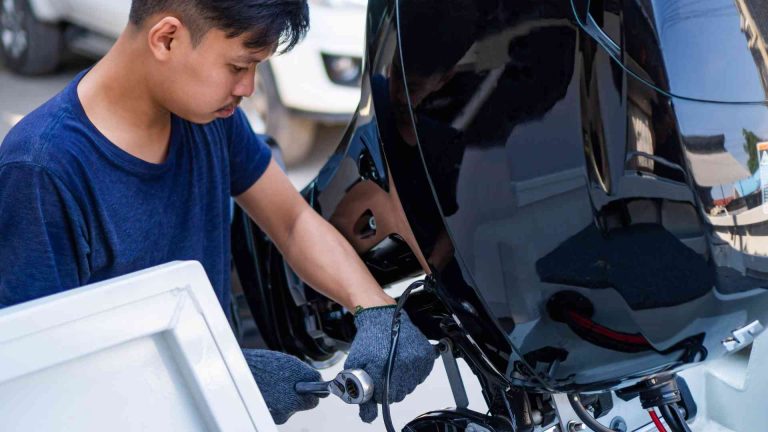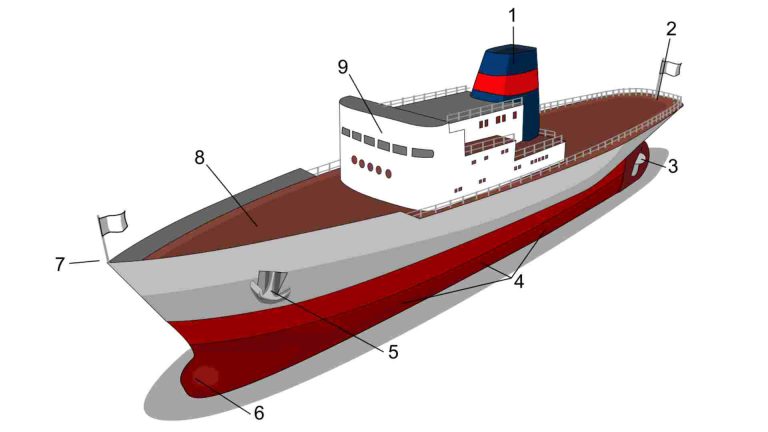A Step-by-Step Guide to Replacing the Axle on Boat Trailer
When it comes to towing a boat, a reliable and properly functioning trailer is essential for a safe and efficient journey. One crucial component of the boat trailer that requires attention is the axle. The axle plays a vital role in supporting the weight of the boat and ensuring smooth transportation on the road. In this article, we will explore the process of replacing the axle on a boat trailer, the signs indicating the need for replacement, and the importance of following proper procedures.
Regular maintenance is key to keeping your boat trailer in top condition. Over time, the axle can wear out due to factors such as heavy loads, road vibrations, and exposure to the elements. Recognizing the signs of a deteriorating axle, such as excessive vibration, uneven tire wear, or strange noises, is crucial for ensuring your safety and the protection of your boat.
In the following sections, we will delve into the steps involved in replacing a boat trailer axle, the tools and equipment required, and the importance of adhering to proper procedures. Whether you’re a seasoned boater or a first-time trailer owner, understanding the process of replacing the axle will empower you to maintain a safe and reliable trailer for your boating adventures. So, let’s dive in and explore the world of boat trailer axle replacement.
Understanding the Axle and Its Importance:

An axle is a crucial component of a boat and trailer system, providing support and structural integrity while allowing for smooth movement. It serves as a central shaft upon which the wheels of the trailer are mounted, connecting them to the frame.
The primary role of an axle is to bear the weight of the boat and trailer, including the cargo and any additional equipment. It distributes this weight evenly across the wheels, ensuring stability, balance, and proper weight distribution while towing. The axle also plays a crucial role in maintaining the alignment and tracking of the trailer, aiding in safe and predictable handling.
The axle consists of several key components:
- Spindle: The spindle is the main shaft of the axle onto which the wheel hub is mounted. It provides a rotating surface for the hub and allows it to spin freely.
- Hub: The hub is attached to the spindle and holds the wheel in place. It contains the wheel bearings and provides the connection point for the wheel to rotate around the axle.
- Bearings: Bearings are responsible for reducing friction between the rotating hub and spindle, allowing the wheel to spin smoothly. They are crucial for maintaining proper wheel alignment and reducing wear on the axle components.
- Suspension system: The axle may be equipped with a suspension system, which absorbs shocks and vibrations encountered during towing. This system can include leaf springs, torsion bars, or independent suspension setups. The suspension helps to improve ride comfort, reduce stress on the trailer, and provide better handling characteristics.
Common indicators that the axle needs to be replaced
Regular inspection and maintenance are essential to ensure the axle’s optimal performance. Here are some common indicators that the axle may need to be replaced or repaired:
- Excessive rust: Rust can weaken the structural integrity of the axle. If you notice significant rust or corrosion on the axle, particularly in critical areas like the spindle or suspension components, it may indicate the need for replacement.
- Bending or misalignment: If the axle appears visibly bent or shows signs of misalignment, such as uneven tire wear or the trailer pulling to one side, it could indicate damage. Bending can occur due to overloading, hitting obstacles, or accidents, and it compromises the axle’s ability to support the weight effectively.
- Worn-out bearings: Insufficient lubrication or excessive wear can cause the wheel bearings to fail. Signs of worn-out bearings include grinding noises, excessive play or looseness in the wheel, or uneven tire wear. If the bearings are not replaced promptly, it can lead to further damage to the axle and potentially cause wheel detachment while towing.
- Irregular tire wear: Uneven tire wear patterns, such as excessive wear on one side of the tire or in the center, can be indicative of axle problems. Improper alignment or damaged components can cause the tires to wear unevenly, compromising stability and tire lifespan.
Risks associated with towing a trailer with a damaged axle
- Reduced stability: A damaged axle may affect the trailer’s stability and balance, leading to unpredictable handling characteristics. This can increase the risk of swaying, fishtailing, or jackknifing, especially at higher speeds or during sudden maneuvers.
- Increased likelihood of accidents: A compromised axle reduces the trailer’s ability to respond to driver inputs properly. This can result in a loss of control over the trailer, increasing the chances of accidents or collisions.
- Further damage to the trailer: Neglecting a damaged axle can lead to additional wear on other components, such as tires, suspension, or the trailer frame. This can result in more extensive and costly repairs down the line.
- Potential wheel detachment: Severely worn-out bearings or axle damage can ultimately cause wheel detachment while towing. Losing a wheel can lead to a dangerous situation on the road, potentially causing accidents and damage to the trailer or other vehicles.
It is crucial to address any signs of axle damage promptly and seek professional assistance for repair or replacement to ensure safe and reliable towing. Regular maintenance and inspections can help identify potential issues early on and prevent more severe damage or accidents.
Preparation and Safety Measures

1. Gather the necessary tools and materials:
When preparing to replace an axle on a boat trailer, you will need the following tools:
- Jack stands: Sturdy jack stands are essential for safely elevating and supporting the trailer while working. Make sure the jack stands are rated to handle the weight of your trailer.
- Wrenches and socket set: A combination of wrenches and a socket set will be necessary for loosening and tightening bolts and nuts. The specific sizes will depend on your trailer’s configuration, so it’s best to have a comprehensive set available.
- Pry bar: A pry bar can be useful for separating components that are stuck or stubbornly connected, such as removing the old axle from the trailer frame or removing the hub from the spindle.
- New axle: Ensure you have a suitable replacement axle that matches the specifications and capacity requirements of your boat trailer. The axle should be compatible with the trailer’s weight capacity and have the correct dimensions to fit the existing suspension system and wheel hubs.
- Lubricants: It’s advisable to have some lubricants on hand, such as grease or bearing lubricants, to ensure proper installation and smooth operation of the axle components.
- Replacement bearings: Depending on the condition of your current bearings, you may need to replace them. It’s a good idea to have new bearings and seals available during the axle replacement process.
2. Safety Precautions:
Working on a boat trailer requires careful attention to safety to prevent accidents or injuries. Here are some important safety precautions to follow:
- Use jack stands: Never rely solely on a jack to support the weight of the trailer. Always use sturdy jack stands positioned at appropriate points under the trailer frame to provide stable support.
- Wear protective gear: When working on the trailer, wear appropriate protective gear such as gloves and safety glasses. This will help protect you from potential injuries caused by sharp edges, rust, or flying debris.
- Work on a level surface: Ensure that the trailer is parked on a level surface before beginning any work. This helps maintain stability and prevents the trailer from rolling or tipping during the axle replacement process.
- Follow manufacturer guidelines: Refer to the manufacturer’s instructions or guidelines for your specific boat trailer model. This ensures that you follow proper procedures and specifications for axle replacement, reducing the risk of errors or complications.
- Take precautions against unintended movement: While working on the trailer, take steps to prevent unintended movement. This can be done by engaging the parking brake, chocking the wheels, or using additional supports like wheel chocks or blocks.
- Seek professional assistance if needed: If you’re unsure about any aspect of the axle replacement process or lack the necessary tools or experience, it’s advisable to seek professional assistance. They can ensure the job is done safely and correctly.
By following these safety precautions and working methodically, you can help minimize the risk of accidents and injuries while replacing the axle on your boat trailer.
Step-by-Step Guide to Axle Replacement:

1. Jacking up the trailer:
- Park the trailer on a level surface and engage the parking brake.
- Place wheel chocks or blocks behind the wheels opposite to the side you’ll be working on.
- Using a hydraulic jack or a suitable trailer jack, position it under the trailer frame near the axle you’re replacing.
- Carefully raise the trailer until the wheels are off the ground.
- Once the trailer is lifted, place sturdy jack stands under the frame near the axle, ensuring they are securely positioned. Slowly lower the trailer onto the jack stands and double-check their stability.
2. Removing the wheels and old axle:
- Loosen the lug nuts on the wheels but do not remove them completely at this stage.
- With the lug nuts loosened, use a jack or your hydraulic jack to slightly lift the trailer again. This relieves pressure on the wheels.
- Remove the lug nuts completely and gently slide the wheels off the studs.
- Locate the mounting brackets or U-bolts connecting the old axle to the trailer frame.
- Using appropriate wrenches or socket sizes, loosen and remove the nuts and bolts securing the axle to the trailer frame.
- If necessary, use a pry bar or mallet to carefully disconnect any components that may be holding the axle in place, such as brackets or hangers.
- Once all connections are removed, slide out the old axle from under the trailer.
3. Installing the new axle:
- Carefully position the new axle under the trailer, aligning it with the suspension components and the mounting brackets or hangers on the frame.
- Ensure that the axle is centered and parallel with the trailer frame.
- Slide the new axle into position, making sure it fits securely in the suspension system.
- Reattach the mounting brackets or hangers to the trailer frame using the appropriate nuts, bolts, or U-bolts. Tighten them securely but avoid over-tightening, which could lead to damage or misalignment.
- Double-check that the axle is properly aligned and centered. Make any necessary adjustments before proceeding.
4. Reinstalling wheels and final checks:
- Slide the wheels back onto the axle studs and hand-tighten the lug nuts.
- Gradually lower the trailer off the jack stands, allowing the weight of the trailer to settle onto the new axle.
- Once the trailer is resting on the ground, use a torque wrench to tighten the lug nuts to the manufacturer’s recommended specifications.
- Check the bearings and ensure they are properly seated and lubricated. If necessary, repack or replace the bearings and seals.
- If your trailer has brakes, adjust them according to the manufacturer’s instructions to ensure proper operation.
- Conduct a thorough visual inspection of the entire trailer, including the new axle, wheels, suspension components, and connections, to ensure everything is properly installed and secure.
- Test the stability and handling of the trailer by towing it a short distance at low speed. Pay attention to any unusual vibrations, noises, or handling issues and address them accordingly.
It’s important to note that axle replacement can vary depending on the specific trailer model and axle design. Always refer to the manufacturer’s instructions or seek professional guidance if you are unsure about any aspect of the replacement process.
Post-Replacement Maintenance and Considerations:

1. Bearing and brake maintenance:
After axle replacement, it’s crucial to perform regular maintenance on the bearings and brakes to ensure their optimal performance and longevity. Here are some important considerations:
- Bearing inspection and repacking: Inspect the bearings periodically for signs of wear, damage, or lack of lubrication. If there are any indications of problems, such as grinding noises or excessive play, remove, inspect, and repack the bearings with fresh grease. Follow the manufacturer’s instructions for the correct procedure and recommended lubricants. If the bearings are excessively worn or damaged, they should be replaced.
- Brake adjustment and maintenance: If your trailer has brakes, it’s important to adjust and maintain them properly. Check the brake system regularly, ensuring that the brake pads or shoes have sufficient thickness and are wearing evenly. Adjust the brakes according to the manufacturer’s specifications to ensure proper braking performance. If you’re unsure about the process or lack experience, consult a professional for assistance.
2. Regular maintenance tips:
To maintain the new axle and the overall performance of your boat trailer, consider the following maintenance tips:
- Lubrication: Regularly lubricate the moving parts of the axle, such as the spindle and suspension components, as recommended by the manufacturer. Use appropriate lubricants to ensure smooth operation, reduce friction, and prevent excessive wear.
- Regular inspections: Conduct routine inspections of the trailer, paying attention to the axle, suspension system, and other critical components. Look for signs of wear, rust, or damage. Check for loose or missing bolts, brackets, or hangers. Address any issues promptly to prevent further damage or safety hazards.
- Proper trailer storage: When the trailer is not in use, store it in a clean, dry, and well-ventilated area. If possible, elevate the trailer off the ground to prevent prolonged exposure to moisture. This helps prevent rust and corrosion on the axle and other metal components.
- Tire maintenance: Regularly inspect the trailer tires for proper inflation, tread wear, and signs of damage. Maintain the recommended tire pressure and ensure that the tires are balanced and aligned correctly. Rotate the tires as recommended by the manufacturer to promote even wear.
- Wiring and lighting: Check the trailer’s wiring and lighting system to ensure they are functioning correctly. Make sure all lights, including brake lights and turn signals, are operational. Replace any damaged or burnt-out bulbs promptly.
- Follow weight capacity guidelines: Avoid overloading the trailer, as it can put excessive stress on the axle and other components. Refer to the trailer’s weight capacity guidelines and adhere to them to maintain safe towing conditions.
By following these maintenance tips, you can prolong the life of your new axle, ensure safe towing, and minimize the risk of unexpected failures or breakdowns. Regular maintenance not only enhances the trailer’s performance but also contributes to overall safety on the road.
Watch How to replace a trailer axle | Video
Can I replace the axle on my boat trailer myself, or should I hire a professional?
Replacing the axle on a boat trailer can be a complex task that requires certain tools, knowledge, and expertise. If you have the necessary experience and feel confident in your abilities, you can attempt it yourself. However, if you’re unsure or lack the proper tools and experience, it’s recommended to seek professional assistance to ensure the job is done correctly and safely.
How do I determine the correct axle size and weight capacity for my boat trailer?
To determine the correct axle size and weight capacity, you should refer to your boat trailer’s specifications and consult the manufacturer’s guidelines. Consider factors such as the trailer’s overall weight, the number of axles required, and the axle’s load rating. If you’re uncertain, it’s best to contact the manufacturer or a reputable trailer dealer for assistance.
Can I use a different brand or model of axle as a replacement for my boat trailer?
It’s generally recommended to use an axle that matches the specifications and design of the original axle. However, if you’re considering using a different brand or model, ensure that it is compatible with your trailer’s weight capacity, suspension system, and wheel hubs. Consult with professionals or experts in the field to determine the suitability of the replacement axle.
Do I need to replace the bearings when replacing the axle on my boat trailer?
It’s a good practice to inspect the bearings during the axle replacement process. If the bearings show signs of wear, damage, or lack of lubrication, it’s advisable to replace them. Worn-out or damaged bearings can affect the axle’s performance and compromise the trailer’s safety and handling. Consider replacing the bearings with new ones or repack them with fresh grease, following the manufacturer’s guidelines.
How often should I inspect and maintain the axle on my boat trailer?
Regular inspection and maintenance of the axle are essential for safe and reliable towing. It’s recommended to inspect the axle and its components, including the bearings and suspension system, at least once a year or more frequently if you frequently tow in harsh conditions. Additionally, follow the manufacturer’s guidelines for maintenance, lubrication, and bearing repacking to ensure the axle’s longevity and optimal performance.
Conclusion

Replacing the axle on a boat trailer involves several key steps:
- Jacking Up the Trailer: Safely lift the trailer using a jack and support it with sturdy jack stands.
- Removing the Wheels and Old Axle: Loosen and remove the lug nuts, slide off the wheels, disconnect the axle from the trailer frame, and remove the old axle.
- Installing the New Axle: Align and position the new axle, secure it to the trailer frame, and ensure proper alignment.
- Reinstalling Wheels and Final Checks: Mount the wheels back onto the new axle, tighten the lug nuts, check and adjust the bearings and brakes (if applicable), and conduct a thorough inspection of the trailer’s stability.
Throughout the axle replacement process, it is crucial to prioritize safety. Follow safety measures such as using jack stands, wearing protective gear, and working on a level surface. If you are unsure or lack the necessary tools and experience, it is recommended to seek professional assistance to ensure the job is done safely and accurately.
Regular maintenance of the axle, including bearing inspections, lubrication, and proper storage, is essential for safe and trouble-free towing experiences. Addressing any signs of damage promptly and replacing the axle when necessary will help maintain the trailer’s stability and ensure optimal performance.
By following these guidelines and prioritizing regular maintenance, you can enjoy safer and more reliable towing experiences with your boat trailer. Remember, if you have any specific concerns or questions, consult professionals or experts in the field for personalized advice and guidance.
Share A Step-by-Step Guide to Replacing the Axle on Boat Trailer with your friends and Leave a comment below with your thoughts.
Read What is Needed for Steering Control on a PWC? – Components until we meet in the next article.






